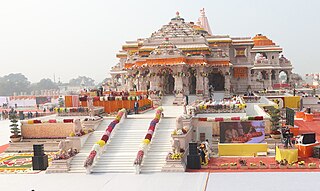
Ayodhya is a city situated on the banks of the Sarayu river in the Indian state of Uttar Pradesh. It is the administrative headquarters of the Ayodhya district as well as the Ayodhya division of Uttar Pradesh, India.

Shakya was an ancient clan of the northeastern region of South Asia, whose existence is attested during the Iron Age. The Shakyas were organised into a gaṇasaṅgha, also known as the Shakya Republic. The Shakyas were on the periphery, both geographically and culturally, of the eastern Indo-Gangetic Plain in the Greater Magadha cultural region.
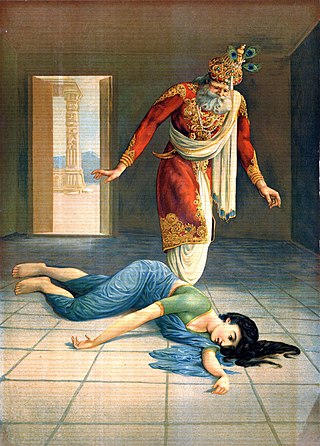
Dasharatha was the king of Kosala, with its capital at Ayodhyā, in the Hindu epic Ramayana. Dasharatha married Kausalya, Sumitra and Kaikeyi. He was the father of Rama, the protagonist of the epic, Bharata, Lakshmana, and Shatrughna. Dasharatha also finds mention in the Vishnu Purana.
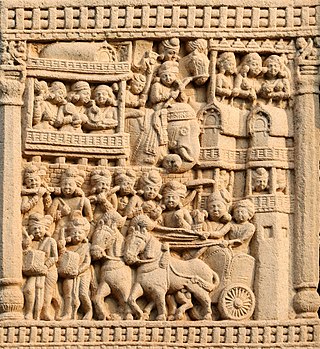
Ajatasattu or Ajatashatru in Buddhist tradition, or Kunika and Kuniya in the Jain histories, was one of the most important kings of the Haryanka dynasty of Magadha in East India. He was the son of King Bimbisara and was a contemporary of both Mahavira and Gautama Buddha. He forcefully took over the kingdom of Magadha from his father and imprisoned him. He fought a war against the Vajjika League, led by the Licchavis, and conquered the republic of Vaishali. The city of Pataliputra was formed by fortification of a village by Ajatashatru.
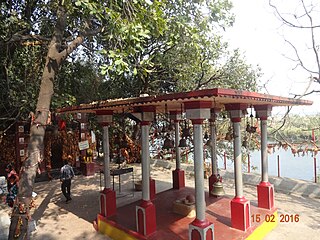
Sambalpur District is a district in the western part of state of Odisha, India. The historic city of Sambalpur is the district headquarters.

Kosala, sometimes referred to as Uttara Kosala was one of the Mahajanapadas of ancient India. It emerged as a small state during the Late Vedic period and became one of the earliest states to transition from a lineage-based society to a monarchy. By the 6th century BCE, it had consolidated into one of the four great powers of ancient northern India, along with Magadha, Vatsa, and Avanti.
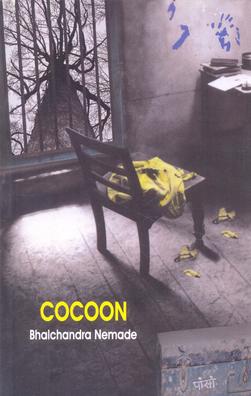
Kosala, sometimes spelled Kosla, is a Marathi novel by Indian writer Bhalchandra Nemade, published in 1963. Regarded as Nemade's magnum opus, and accepted as a modern classic of Marathi literature, the novel uses the autobiographical form to narrate the journey of a young man, Pandurang Sangvikar, and his friends through his college years.

Kosala is the kingdom of Rama mentioned in the Ramayana. Ayodhya was its capital, now located in Ayodhya, Uttar Pradesh. Rama's sons Lava and Kusha inherited parts of this kingdom. Lava ruled from the city called Shravasti and Kusa from the city called Kushavati. A colony of Kosala kings existed in Madhya Pradesh. It was called Dakshina Kosala. Rama's mother Kausalya was from this kingdom. Rama extended his influence up to the island-kingdom of Lanka situated in the Indian Ocean. He had friendly relations with the southern kingdom of Kishkindha.

Dakshina Kosala is a historical region of central India. It was located in what is now Madhya Pradesh and Chhattisgarh along with parts of Western Odisha. At its greatest extent, it may have also included a part of the Vidarbha region in present-day Maharashtra.
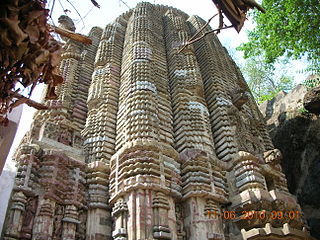
Bargarh District is an administrative district of Odisha state in eastern India. The city of Bargarh is its district headquarters. The district was carved out of the erstwhile district of Sambalpur on 1 April 1993.
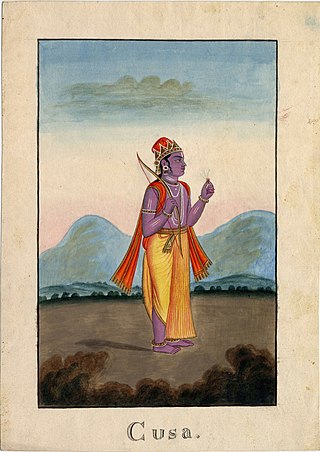
Kusha and his younger twin brother Lava were the children of Rama and Sita. Their story is recounted in the Hindu epic, the Ramayana. Hindu traditions claim he ruled the entire region of Kashmir, Indus River and Hindu Kush as frontier lands of India known as Hindu Kush Kshetra and founded the city of Kashmir in the valley and Kasur with Lavapuri of Lava in base lands, though local lore contends Kasur was founded in 1525 by Pashtun migrants. His brother Lava is traditionally believed to have founded Lavapuri.
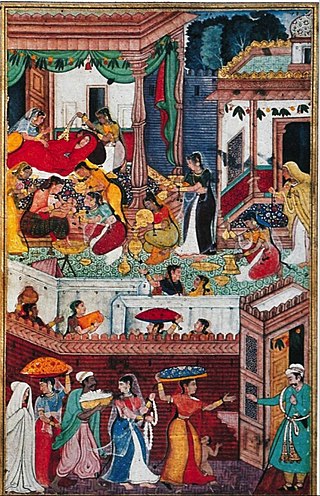
Kausalya is a queen of Kosala in the Hindu epic Ramayana. She is the first queen consort of Dasaratha, who ruled Kosala from its capital Ayodhya. She is the mother of Rama, the male protagonist of the epic. She is a secondary character in the Ramayana, so only aspects of her life are described in detail.
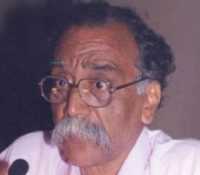
Bhalchandra Vanaji Nemade is an Indian Marathi language writer, poet, critic and linguistic scholar. Beginning with his debut novel Kosala, Nemade brought new dimensions to the world of Marathi literature. This was followed by a tetralogy consisting of novels Bidhar, Hool, Jareela and Jhool. In 2013, Nemade published his magnum opus titled Hindu: Jagnyachi Samruddha Adgal which is regarded as his masterpiece. Nemade is a recipient of the Sahitya Akademi Award as well as the Jnanapith Award, the highest literary honour in India. In 2013, he was awarded the Padma Shri.

The Mahameghavahana dynasty was an ancient ruling dynasty of Kalinga after the decline of the Maurya Empire. In the first century B.C., Mahameghavahana, a king of Chedirastra conquered Kalinga and Kosala. During the reign of Kharavela, the third king of Mahameghavahana dynasty, South Kosala became an integral part of the kingdom. He patronised Jainism, but did not discriminate against other religions. He is known by his Hathigumpha inscription.

Koliya was an ancient Indo-Aryan clan of north-eastern South Asia whose existence is attested during the Iron Age. The Koliyas were organised into a gaṇasaṅgha, presently referred to as the Koliya Republic.

Nagnajiti, also known as Satya, and Nappinnai, is the fifth of the Ashtabharya, the eight principal wives of the Hindu god Krishna.

Kosala is a genus of moths in the family Lasiocampidae. The genus was erected by Frederic Moore in 1879.

Kāśī was an ancient kingdom of India whose existence is attested during the Iron Age. The inhabitants of the Kāśī were named the Kāsikas in Pāli and the Kāśeyas and Kāśikas in Sanskrit.
The Somavamshi or Keshari dynasty ruled parts of present-day Odisha in eastern India between the 9th and the 12th centuries. Their capitals included Yayatinagara and Abhinava-Yayatinagara.

















